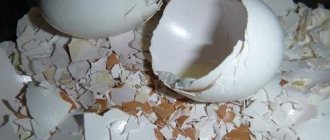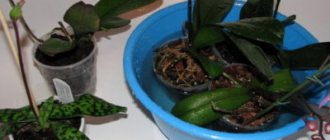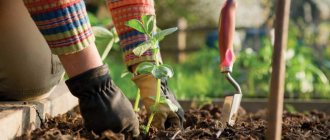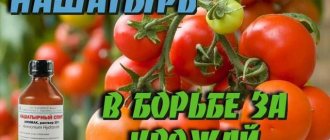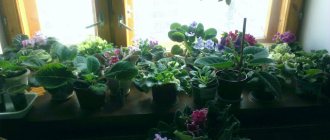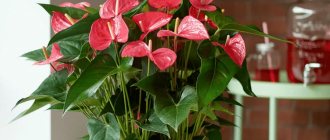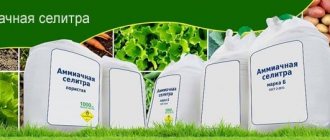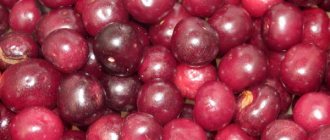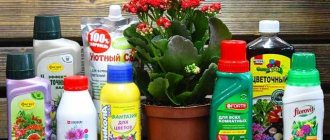Probably, every summer resident dreams of finding a universal remedy that would serve as both a fertilizer and protection against pests, but the most important thing is that it is natural and does not carry any negative health consequences and, at the same time, is effective. Such a product exists and usually, people consider it garbage and throw it away, it’s an eggshell. If all summer residents knew what a storehouse of vitamins these fragile plates contain, they would never throw them away. This is a truly universal raw material that, if used correctly, will bring great benefits to your plants.
Composition and structure of eggshells
The structure of the shell is a crystalline lattice consisting mainly of calcium carbonate (more than 90% of the total composition).
It contains as additional substances:
- nitrogen;
- sulfur;
- iron;
- phosphorus;
- potassium;
- organic protein;
- magnesium;
- molybdenum.
This combination of substances has a beneficial effect on the plant and is very useful for the growth and nutrition of various crops. It is these components that nitrogen-phosphorus fertilizers consist of.
Properties
What effect can a gardener expect when using such fertilizer?
As we found out earlier, the shell contains about 92% calcium carbonate.
- It is easily absorbed by plants.
- Activates the vital activity of organisms that allow the initiation of organic decomposition processes.
- The structure and quality of the soil improves.
- Nutrient components dissolve faster.
- When feeding seedlings, the adaptation period goes through faster.
- Plants strengthen and become hardy.
- The growth of the root system is accelerated.
- Air exchange improves.
A similar effect is provided not only by calcium in the composition, but also by potassium, manganese, iron, phosphorus and magnesium. Together, these elements contained in the shell can bring any garden bed to life.
Read an article on the topic: Calcium nitrate - nourishes, fertilizes, provides the necessary calcium
What are the benefits of shells for plants?
- Egg shells reduce the acidity of the soil and improve its structure and composition. The soil becomes more alkaline, lighter and looser, and its air and water permeability also increases. In addition, reduced soil acidity increases the fruiting of many garden and vegetable crops. This is especially true for clayey and heavy soils.
- The structure and composition of such a product, unlike lime and chalk, promotes the rapid absorption of nutrients from the soil.
- Due to the presence of calcium and magnesium in the shell, active growth of the above-ground part of the plant occurs, and the process of photosynthesis and metabolism improves.
- When using such fertilizer for seeds, their germination improves and germination increases.
- The presence of calcium in the soil promotes better absorption by plants of all useful substances from it, and also the activation of nodule bacteria, which retain nitrogen in the root zone, which is important for its growth and full development.
- Calcium strengthens the vascular walls through which nutrients enter all parts of the plant.
- Enriches the soil with minerals.
According to research, to neutralize soil acidity, at least 0.5 kg of crushed shells per 1 square meter should be used. m. If the soil is very acidic and heavy, then the dosage can be increased to 1 kg.
Advice from experienced gardeners
Agronomists often use eggshell powder even when cultivating large areas. This is done in situations where plants are in dire need of potassium and calcium. However, agronomists warn that if you use eggshells unnecessarily, and even in large quantities, then you risk overfeeding the plants, thereby destroying the standing crop.
Expert opinion
Chernyaeva Tatyana Dmitrievna
Absolutely loves gardening and grows only organic vegetables
Ask a Question
You should especially not abuse this fertilizer when it comes to flowers and plants on windowsills.
Fertilizer should be used only in cases where the appearance and behavior of plants indicate this:
- growth retardation was noticed;
- plants are attacked by pests;
- research was carried out and high acidity of the soil was revealed;
- the crop is grown in unusual conditions and needs help during planting in open ground.
Only in these cases is feeding from eggshells applicable.
If you feed absolutely healthy plants, then be careful and do not overdo it. It is important to walk a fine line.
What plants are suitable for this fertilizer?
As a fertilizer, eggshells are suitable for those plants that do not like soil with high acidity:
- bell pepper;
- tomatoes;
- lettuce;
- beet;
- broccoli;
- cabbage;
- melon;
- onion;
- currant;
- eggplants.
These plants prefer an alkaline environment, so they always respond well to such feeding.
What plants can be harmed?
Fertilizing from the shell will not appeal to crops that require highly acidic soil, these include:
- Chinese cabbage;
- spinach;
- beans;
- peas;
- cucumbers;
- zucchini;
- strawberries
The product should not be added to indoor flowers that grow in acidic soil:
- gloxinia;
- camellias;
- azaleas;
- gardenias;
- pelargoniums;
- hydrangeas;
- violets.
Preparation of fertilizer
First of all, you need to thoroughly rinse and dry the peeling eggs. Then they are calcined in the oven for 30 minutes at a temperature of 150 degrees. After this procedure, nutrients are more easily transferred into the soil. After this, they are crushed using a blender, meat grinder, rolling pin or hammer.
Then you need to prepare an infusion. To do this, take the shells of 9-10 eggs, fill them with 3 liters of hot water, close the lid tightly and leave in a dark, cool place for 2 weeks. When the infusion acquires a cloudy color and the smell of hydrogen sulfide, the fertilizer is “ripe.”
When using this infusion, it should be diluted with water in a ratio of 1:3.
The peelings can be used dry, poured into holes or scattered around plants. Fertilizers from egg peels are also prepared with the addition of additional ingredients:
- onion peel;
- limestone;
- chicken droppings;
- humus;
- chalk;
- nettle;
- wood ash.
Mulching
Powdered eggs make excellent mulch. It is sprinkled on the surface of the earth near trees and bushes. The shell is crushed into small pieces, but not brought to a powdery state. Then they are scattered in a dense layer in a circle near the trunk.
Its structure allows it not to decompose longer and remain on the ground, protecting plants from weeds and pests, plus saturating the soil with nutrients.
But so that air can easily flow to the roots of trees and bushes, do not turn it into powder. Sprinkle with crushed shells. It is enough to break it or crush it in a mortar by hand.
General rules for using fertilizer
In order for fertilizing to be as effective as possible and not cause harm, you should adhere to the general rules of application:
- If you plan to use the fertilizer in dry form, then the shells must be crushed before application. This will allow it to act on the soil more effectively, and will also prevent large fragments from injuring the roots.
- Fertilizer is applied no more than once a week or even every 14 days, in order to avoid oversaturation of the soil with calcium.
- It is imperative to follow the norms for applying fertilizing: add it to the seedlings at the rate of 1 tbsp. spoon per 200 grams, and adult plants - 500 g per 1 sq. m. garden.
- If the amount of fertilizer is limited, then it is applied directly under the stem of the plant.
- When planting seedlings, 2-3 tablespoons of crushed peelings should be added to the hole.
- For the best effect, apply in stages: when sowing seeds, for seedlings, when planting in the ground, when feeding until the ovary forms.
In addition, you should follow the rules for storing and preparing cleanings so that they do not emit an unpleasant odor, and in order to prevent the proliferation of putrefactive bacteria. That is why the shells are thoroughly washed, dried, the inner protein film is removed and stored in a dry and dark place. It is advisable to dry them outdoors or indoors where there are drafts.
According to the recommendations of experts, fertilizing is applied only until the ovaries appear. After this, it is not recommended to apply the product, otherwise it may cause a delay in fruit ripening.
Rules for procurement of raw materials
To obtain high-quality fertilizing, a certain amount of eggshells is required. Therefore, it is prepared for future use. After using the product, carefully remove wet protein liquid residues. Pieces of shell are placed in a cardboard box. To ensure that the raw materials dry naturally, the containers are placed in a room with good ventilation. Then the shells are crushed and packaged in paper bags or glass jars, after which they are sealed.
Raw materials cannot be stored in plastic bags, since they spontaneously become covered with moisture and “bloom.”
How to fertilize correctly
Egg shells can be used in several ways, depending on the stage of plant development.
It can be:
- seeds for seedlings and or ground crops;
- grown seedlings;
- mature plants;
- indoor flowers.
Seeds
In order for seedlings to appear faster, after sowing, the seeds are sprinkled with crushed eggshells on top and only then covered with soil. The second option is to pour some egg shells into the bottom of the container for sowing seedlings and cover the top with earth. This will make the soil more nutritious.
Seedlings
Eggshells are useful as a preventative against rot. For example, if you add it to the soil for tomato seedlings, the likelihood that they will develop blossom end rot is sharply reduced, since this disease occurs due to a lack of calcium in the soil.
In addition, it is recommended to dust the seedlings with crushed egg peels in order to prevent blackleg disease, while the shells should be crushed to dust.
It has been noted that egg peels can be harmful for early seedlings (before the appearance of the 3rd true leaf).
Another method of using eggshells for seedlings is to create “cups” from them for sowing seeds. You can make small pots from the halves of the shells, fill them with soil and sow the seeds. This way they will receive additional nutrients. And you can plant seedlings together with egg cups, since as the roots grow in the soil, they will disintegrate.
Feeding mature plants
When fertilizing adult plants, eggshells are added to the holes to saturate the soil with calcium and nutrients.
To do this, use an infusion of eggshells and water, aged for at least 5-7 days. Before use, it is diluted with water in a ratio of 1:3 and poured into the wells in an amount of no more than 0.5 liters of solution for each.
The product is used for feeding:
- bell pepper;
- eggplant;
- beets;
- tomatoes and other vegetables.
Dry shells are used for feeding:
- Luke;
- potatoes;
- carrots.
Indoor flowers
To fertilize indoor flowers, eggshells are used as an infusion or in dry crushed form. It is also suitable for creating a system for draining excess liquid from the roots. To do this, lay crushed shells in a layer of 2-3 cm at the bottom of the flower pot, then add soil and plant the plants. This drainage method allows for normal fluid circulation and does not allow water to stagnate and cause rot in the roots. Even as drainage, eggshells work as a fertilizer, releasing calcium and other elements to the soil.
Gardeners note that it is advisable to use eggshells in the form of an infusion; this method is more effective and gives better results.
The plant should be watered with this infusion no more than once a week, a few hours before the main watering.
Before preparing the infusion or pouring the shells into pots, it must be calcined in the oven.
cucumbers
2 tsp will help improve the growth of greenery and root system. eggshells added to each well. The powder is best mixed with fertile soil.
A week before planting cucumber seedlings in an open area, you can water them with infusion. It usually takes 1-2 weeks for the water in which the untreated shells are placed to become cloudy and begin to smell. This means that the infusion is ready and you can water the plants with it. For 1 liter of water, 5-10 shells are enough. The finished composition is diluted with water up to 10 times when watering.
Garden recipes with eggshells
There are many recipes for fertilizers using eggshells. The main advantage of such fertilizers is that they:
- time-tested;
- non-toxic;
- safe;
- give good results.
What do you think about eggshells as fertilizer?
Positively
Negative
A mixture of eggshells and ash
You need to mix the shells (previously calcined in the oven and crushed) and wood ash in a ratio of 1:2, respectively.
Gardeners note that this mixture gives incredible results: the plants become strong, significantly increase in growth, and their productivity also increases.
The mixture is scattered over the beds in a thin layer, then watered generously. The procedure is carried out 1-2 times a week for a month.
With limestone
If you need to not only reduce the acidity of the soil, but also feed the plants, then eggshells are mixed with limestone in a 1:1 ratio and diluted with water to a liquid state. After this, root fertilizing of garden crops is carried out.
Mixing with humus
The humus is diluted with water to the required concentration, and then crushed shells are added per 10 liters of diluted humus - 1 liter jar.
Mulching with eggshells
A great way to get rid of pests such as slugs, snails, and mole crickets. To do this, it is enough to grind the shells well and scatter them around the plants. This will become a kind of obstacle in the path of pests and they will soon stop attacking plants.
When mulching, be aware that the shells can attract birds, and they can also cause damage to the crop.
Abroad, eggshells are often used both as an independent fertilizer and as an auxiliary component of natural fertilizers. In addition, it is an excellent remedy for combating parasites and plant diseases.
Currant
The hard shell prevents the spread of garden pests. This way you can protect currant and raspberry bushes.
You can use egg powder against slugs and snails, and when fighting mole crickets, shrews and moles, it is recommended to use large pieces of shells. You can only break it a little with your hands. The sharp edges of the hard parts will prevent the spread of pests. After sprinkling the soil around the plants, loosen the soil, slightly deepening the shell.
